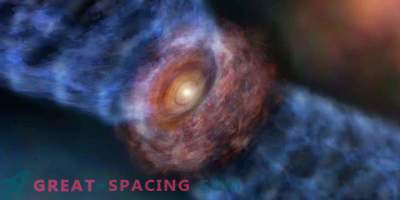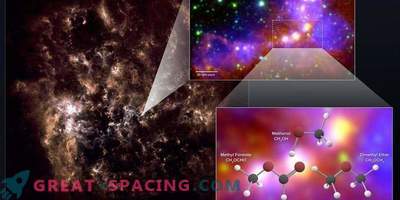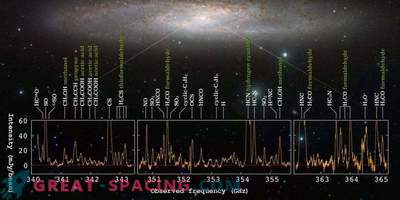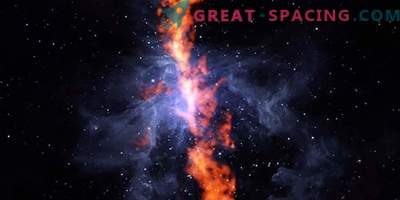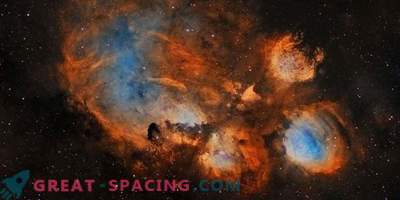
The artistic vision of Orion I - a young massive star distant 1500 light years. A new review from ALMA revealed a ring of common salt around a star. This is the first such detection around a young stellar object. The blue area (1/3 from the center of the disk) - the area where they found the glow of millimeter waves of salt
New observations of ALMA showed the location of ordinary salt in an unusual place. You need to search at a distance of 1500 light years around a young massive star. Earlier, salts were found in the atmospheric layers of old and dying stellar objects, but now for the first time the find has touched a young celestial body. The discovery will allow us to study the chemistry of stellar birth and to find other similar protostars hiding in dense gas and dusty cocoons.
The researchers used the ALMA sub-millimeter array and recorded chemical traces of sodium chloride and other salt compounds in a dusty disk around Orion I - a massive young star behind the Orion Nebula.
It is surprising that in general we managed to find these molecules, because the salt has never shown up next to young stellar objects. To find molecules in space, astronomers use radio telescopes looking for chemical signatures — control bursts in the scattered spectra of radio and millimeter light. Atoms and molecules emit these signals in several ways, based on the ambient temperature. In order to create strong and clear molecular imprints, the temperature must vary between 100-4000 K. An in-depth study of the peaks will make it possible to understand how the star is heating the disk. ALMA shows 60 different molecular transitions, like sodium chloride and potassium chloride in the disk.
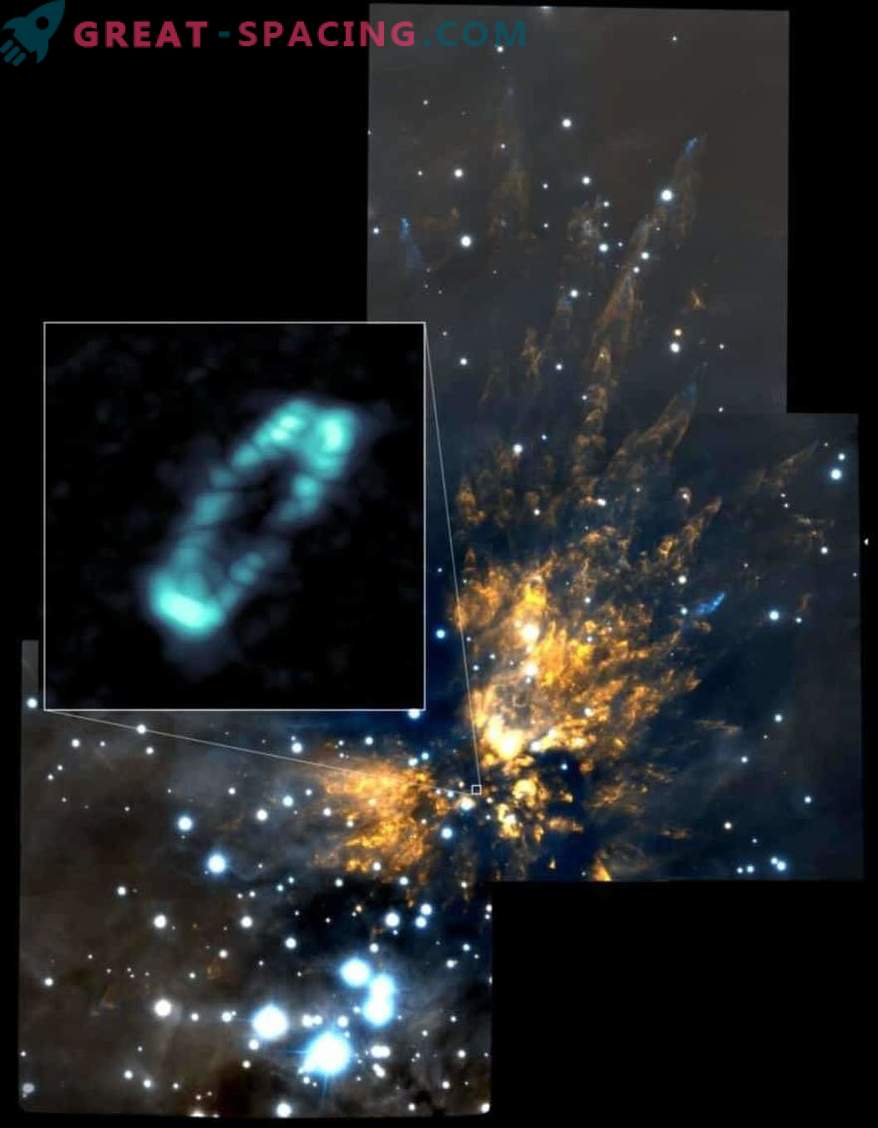
ALMA snapshot for a salt disk around a young massive star Orion I (blue ring). Background near infrared image obtained using the Gemini Observatory
There is an assumption that the origin of salts should be sought in dust grains, which, in a collision, threw the contents into the surrounding disk. Typically, signals from the disk and outflow in a protostar are difficult to detect clearly. But now you can isolate the disk and learn about its movement and massiveness.
The salts around the young star are of interest to astronomers and astrochemists, because some constituent atoms belong to metals (sodium and potassium). So, in their environment you can find other metal-containing molecules. If so, then it is worthwhile to apply similar observations to determine the number of metals in the star birth regions. Now this cannot be done, as free-floating metal compounds are usually invisible to radio astronomy. Salty signatures found in 30-60 a. e. from the star. It is believed that in this area there can be 1 sextillion (one and 21 zeros) kilograms of salt, which is equal to the entire mass of the world’s ocean. Now scientists are planning to find salts and metal molecules in other regions. This will allow us to understand: we have a unique case or a universal tool for studying protoplanetary disks.
The star appeared in Orion I Molecular Cloud - an area of active star birth. The stellar object was pushed out of the parent cloud at a speed of 10 km / s about 550 years ago. Perhaps solid grains of salt are evaporated by shock waves. It is unclear whether there is steam in all the disks of massive protostars or is it a hint of certain violent events.

